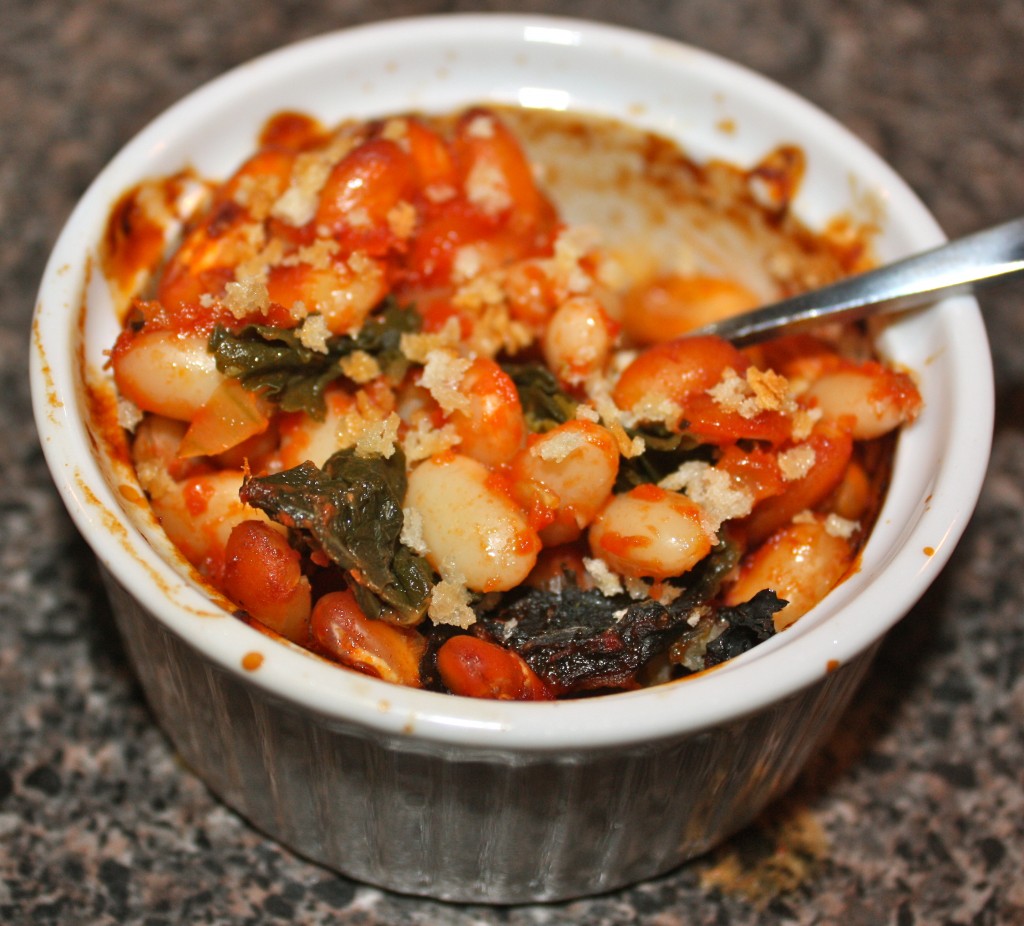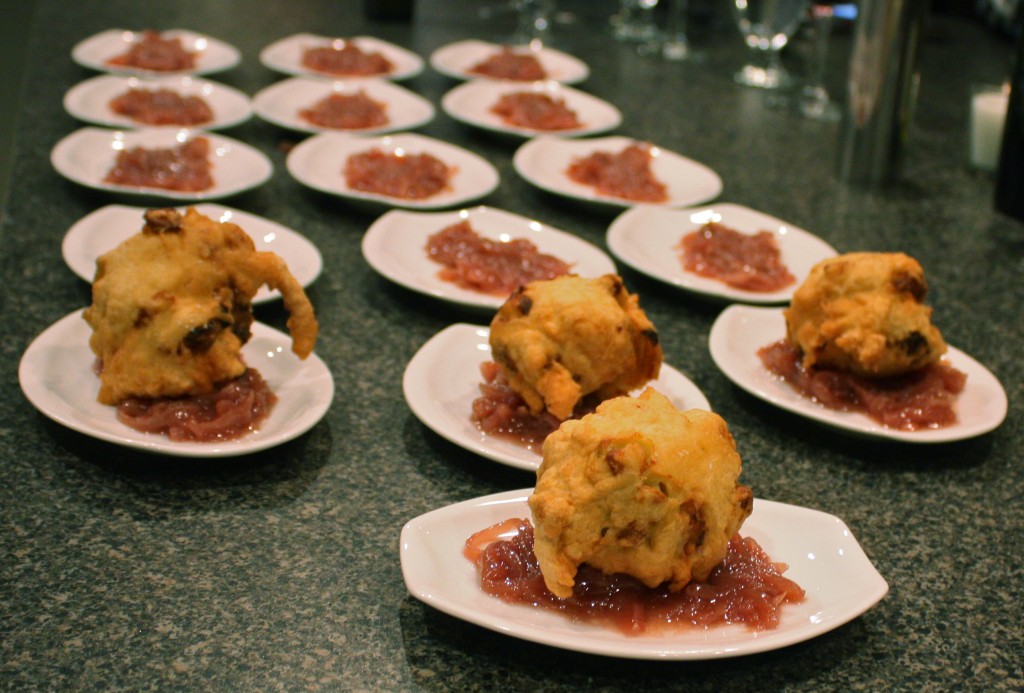I’m not even remotely Ukrainian, but (as I’ve written many times before this) I am fascinated by the food that Ukrainians have brought here to central Alberta.
Yes, perogies. And yes, sauerkraut, kielbasa, and cabbage rolls. But the more I read into this cuisine, the more I respect it. There are so many interesting preserves, and countless recipes of ingenious frugality.
It also seems that every ingredient, dish, and meal comes with superstition and ritual.
Take the traditional Ukrainian Christmas Eve dinner, or Sviata Vechera (literally “Holy Supper”), perhaps the most beloved of all Ukrainian feasts. Orthodox churches use the Julian calendar, so their Christmas Eve falls on January 6. There are more traditions associated with this dinner than I could possibly describe. Here are some of the more common practices:
- Early in the day the yard and stables are cleaned.
- The farm animals are given extra fodder (I think because the infant Jesus was placed in a manger).
- The house is cleaned and whitewashed.
- Hay is placed on the dinner table (again, recalling the manger…) and covered with a special, embroidered tablecloth.
- Farm tools and wheat or hay are put under the table.
- Garlic, a symbol of health and strength, is set at the four corners of the table.
- The children of the house watch for the first star to appear (a symbol of the star that led the magii to baby Jesus).
- The did or didukh, the last sheaf of wheat taken from the fields, serves as a symbol of harvest and gathering. It is placed under the icon in the dining room. In eastern Christianity, whether Ukrainian, Greek, Russian, et c., icons are religious pieces of art, usually paintings representing Jesus, Mary, angels, or saints.
- An elaboroate meal is enjoyed. Traditionally, all animal products – meat, fat, eggs, and dairy – were forbidden. These days meat is still forbidden, but dairy is often permitted.
- Twelve dishes, one for each of the apostles, are shared by the family. There are a few dishes that are always prepared, but the exact meal will vary from family to family.
This past January 6 I cooked a twelve-course dinner inspired by the traditional Sviata Vechera. We dispensed with most of the rituals described above. My version of the dinner was based on traditional dishes, but I adapted the preparations to suit contemporary palates and available ingredients, just as Ukrainian emigrants have done wherever they move in the world. The meal included lots of wild food, such as cherries, puffball mushrooms, wild rice, horseradish, labrador tea, highbush cranberries, and rosehips.
Here’s a brief description of the dishes we ate that night. (Better late than never?) Thank you to Valerie and Vanja for playing host, and to Claire for being my sous.
Kutia
wheat pudding
This is always the first dish of the Holy Supper. It is a pudding of boiled wheat, sweetend with honey, sometimes with the addition of nuts or poppy seeds.
There are many peculiar traditions associated with the kutia. Before the meal, the mother and father of the house take a bowl of kutia to the front door and invite the sun, the moon, and various other natural forces including dead ancestors to come in and enjoy the meal with them.
Once everyone is seated at the table, the father of the house raises a spoonful of kutia and greets his family with the words, “Khrystos Razdayetsia,” meaning “Christ is born.” The family responds, “Slavite Yoho,” or “Let us glorify him.” After this call and response, everyone enjoys their kutia.
At this point the eldest member of the family might fling a spoonful of kutia at the ceiling. “The more kernels that stuck to the ceiling, the greater was the good luck expected in the following year. The number of poppy seeds that stuck indicated the number of new beehives the family would have the following year.”[1]
My version of kutia was made with wheatberries and dried Evans cherries.
Kolach
braided bread
Kolach is a rich bread (ie. containing sugar, eggs, and fat) that’s braided and curled into a ring. In fact the name derives from kolo, which means “circle”. This is a deeply symbolic bit of baking. Oftentimes three loaves of kolach are stacked on top of each other on the supper table, with a candle stuck into the top loaf.
We ate a simple rye loaf, accompanied by honey and garlic.
Kapusniak
sauerkraut soup
This is a soup made from sauerkraut brine. I discussed this form of soup here.
The acidic brine was thickened with a roux and enriched with heavy cream. The soup was garnished with sauerkraut and dark rye croutons.
beans
Bib simply means beans. Broad beans are a very common Holy Supper dish. They are usually simply boiled and mixed with sautéed onions.
We made baked beans with preserved tomatoes, kale, and a breadcrumb crust.
Smazheni Doshchyvyky
puffball mushroom fritters
Typically only dried mushrooms would be used at a Christmas Eve dinner. Puffballs, while common in Ukrainian food, do not dry well, so these fritters would not typically be served at Christmas.
I happened to have some chopped, sautéed puffballs in my freezer. They were foraged by Yolande, the farmer at Tipi Creek CSA, this past summer. They were folded into a simple fritter batter, deep-fried, and served with red onion jam.
Holubtsi
cabbage rolls
My Alberto-Ukrainian sources tell me that in the old country holubtsi are made with sour cabbage leaves, and almost always accompanied by mushroom cream sauce. The Albertan version uses fresh cabbage leaves, and bakes the rolls in tomato sauce.
We opted for the sour cabbage wild mushroom version, but included wild rice in the stuffing.
1. Weleschuk, Mary. Cooking from Generation to Generation. ©2011 L. Rasmussen Co. Ltd. Winnipeg, MB. Page 7. I am hugely indebted to this family cookbook for descriptions of the Sviata Vechera rituals.


